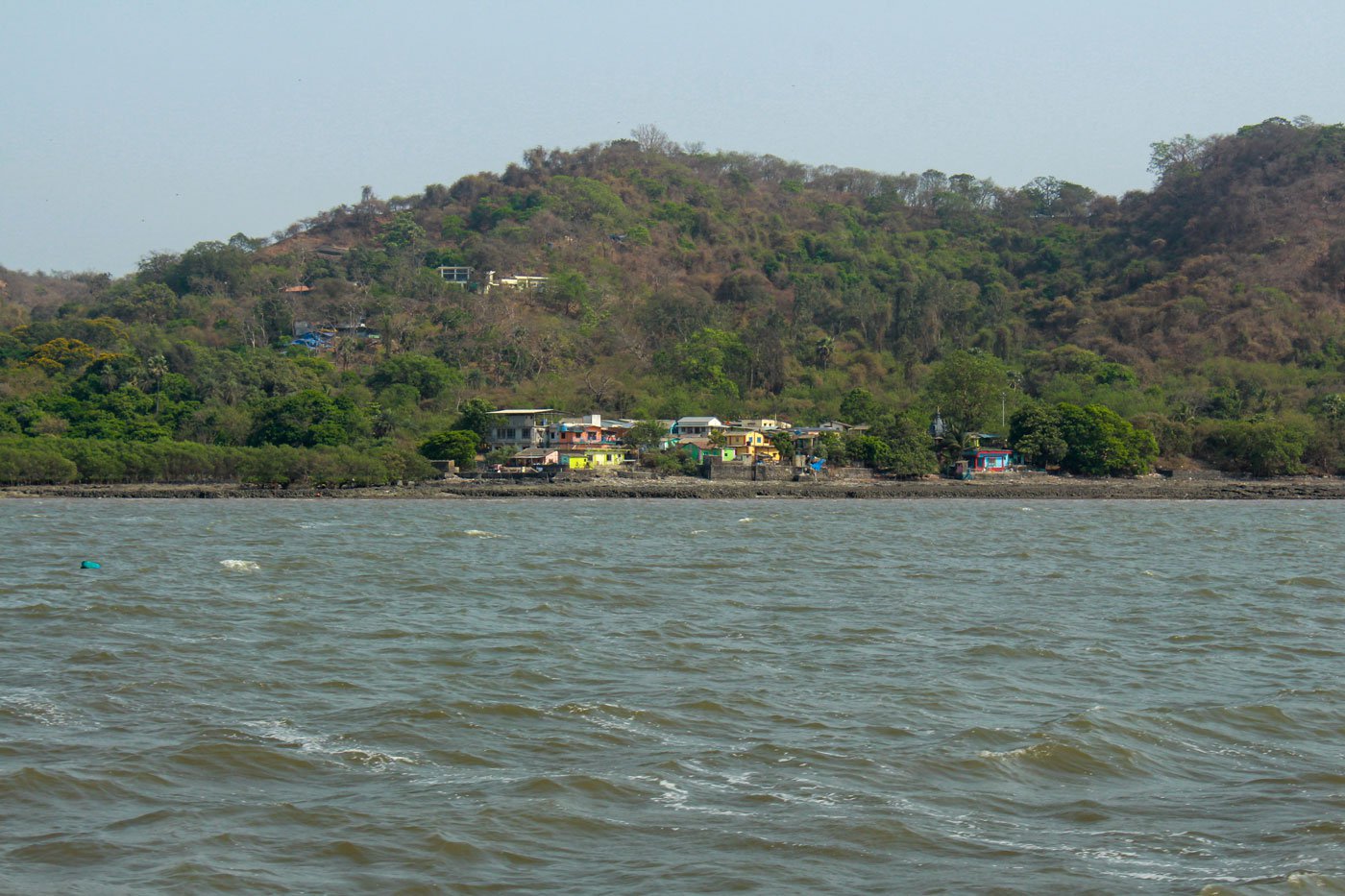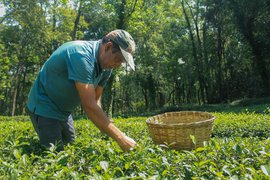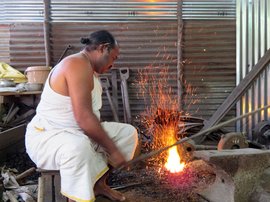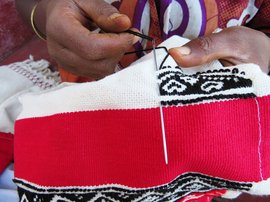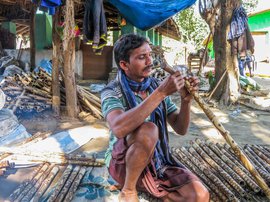Something bit Jayashree Mhatre when she had gone to the forest near her home in Gharapuri to collect firewood. The 43-year-old mother of two girls ignored the bite, perhaps thinking a twig had pricked her. She soon left for home, carrying the firewood she had collected on that mild winter afternoon in January 2020.
A short while later, while standing at her doorway talking to a relative, she collapsed, falling to the ground. Initially, people who were nearby, assumed she had fainted from weakness, as she had been fasting.
“I was told she had fallen unconscious,” recalls Jayashree’s elder daughter, 20-year-old Bhavika. Neither she nor her younger sister, Gauri, 14, had witnessed the incident as they were away at a relative’s home. They heard about it from neighbours and relatives who were present, and who told them that when Jayashree regained consciousness after a while, her hand was shaking. “No one knew what had happened,” adds Bhavika.
Someone rushed to inform Jayashree’s husband, 53-year-old Madhukar Mhatre, who was at the food shop he operated on Gharapuri island. Located in the Arabian Sea, the island is better known for the famous Elephanta caves. This tourist attraction near Mumbai city is a UNESCO World Heritage site – the rock architecture here dates back from the 6th to 8th centuries AD – and attracts millions of visitors every year. The island’s residents depend on tourism for an income – selling hats, sunglasses, souvenirs and eatables; some residents act as guides to the caves.
But while it may feature prominently on the tourist map, the village of Gharapuri on the island falls short of basic medical amenities such as a public health centre. One was set up about two years ago, but lies unattended. The village’s 1,100 live in three hamlets: Rajbandar, Shetbandar and Morabandar. The lack of health facilities forces them to look for options a boat ride away. Not only does this work out to be more expensive, but the delay in medical attention, in some cases, can be fatal.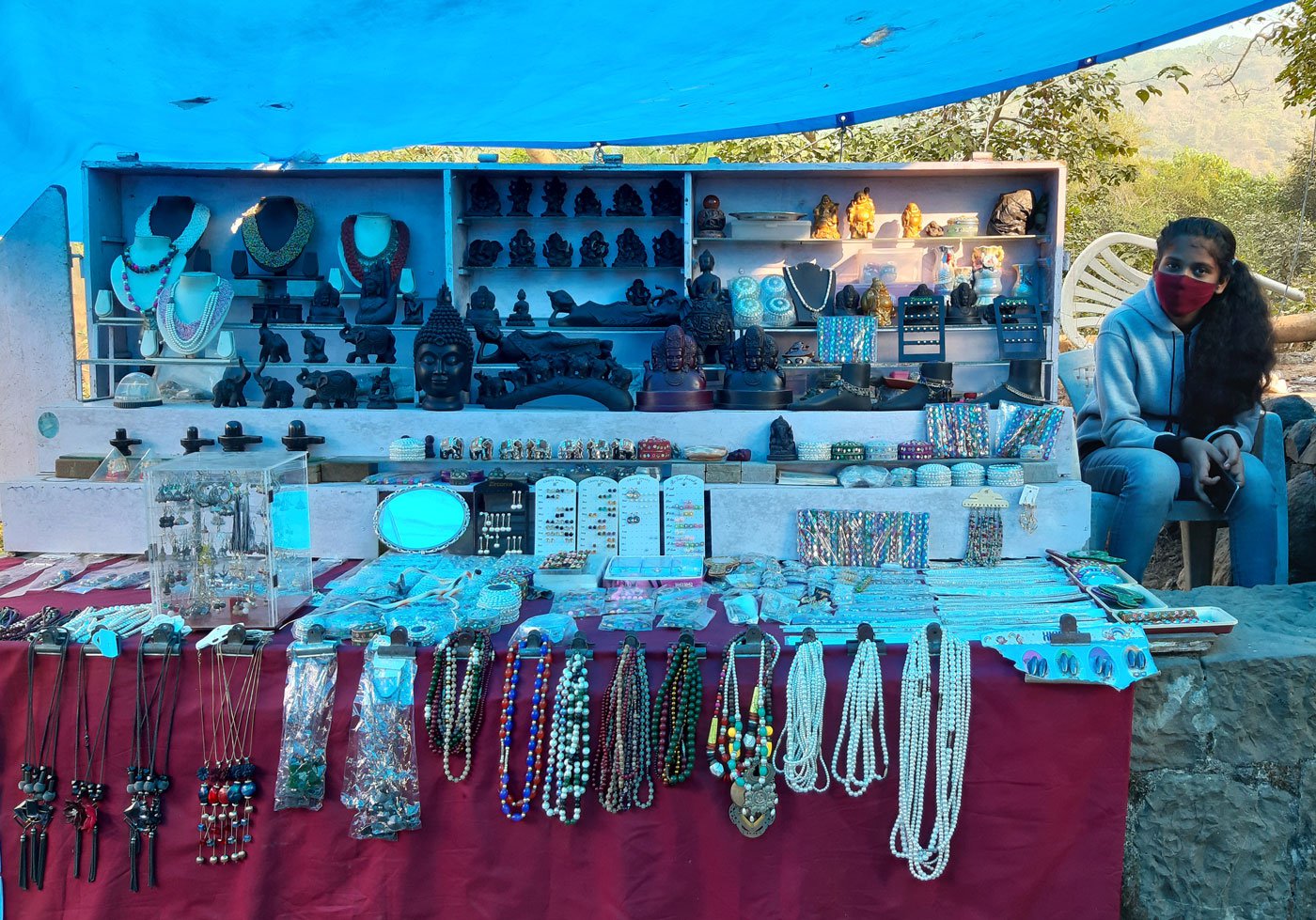
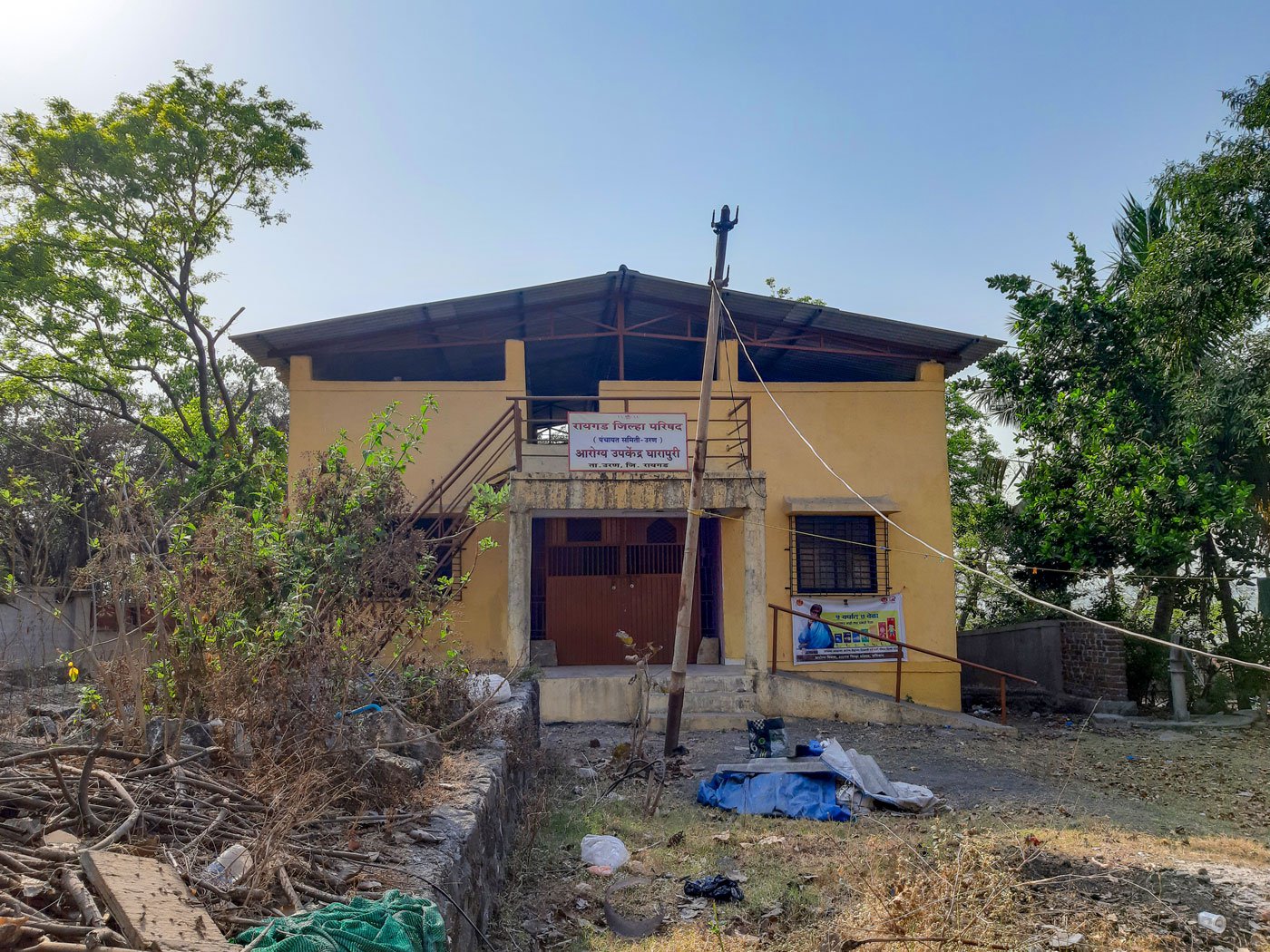
Left: Gauri Mhatre, 14, at her late mother Jayashree's stall selling jewellery and curios to tourists arriving at Elephanta caves. Right: The health centre in Gharapuri village was built two years ago, but is vacant and unattended
Madhukar rushed Jayashree to the jetty to catch the boat for Uran town. But before they could even set off, she died. She was frothing at the mouth in her final moments, which hinted of a snake bite. Those around her recognised the marks on the middle finger of her right hand as where the snake’s fangs had punctured her skin.
Snakebites, scorpion stings and insect bites are common in the area, says Bhavika. People in the village, which lies in Uran
taluka
of Maharashtra’s Raigarh district (also spelt Raigad), recounted other deaths caused by such bites that had not receive first aid.
Over the last decade, the absence of medical facilities on the island has resulted in fatalities that could have been averted with timely medical attention. In fact, there is no medical store in the village on the island, and residents have to make do with what they purchase on their trips to the mainland. And the only way to travel from Gharapuri is on a boat going south to Mora port in Uran taluka, or one that goes east to Nhava village in Navi Mumbai. Both journeys takes roughly half an hour. The boat ride to Colaba in south Mumbai, west of the island, could take up to an hour.
“There is no question of seeing a doctor or nurse in our village. We use home remedies or any medicine we may have [at home],” says Daivat Patil, 33, a tour guide at the Elephanta caves. His mother, Vatsala Patil, sold hats from a makeshift stall near the monument area, earning roughly Rs. 6,000 a month. In the second wave of the pandemic, in May 2021, when she started showing signs of being infected with Covid-19, Vatsala took pain medicines and hoped for the best. Days later, when her body ache showed no signs of abating, she got on a boat with her son. “It’s only in the worst situation that we leave the island,” says Daivat.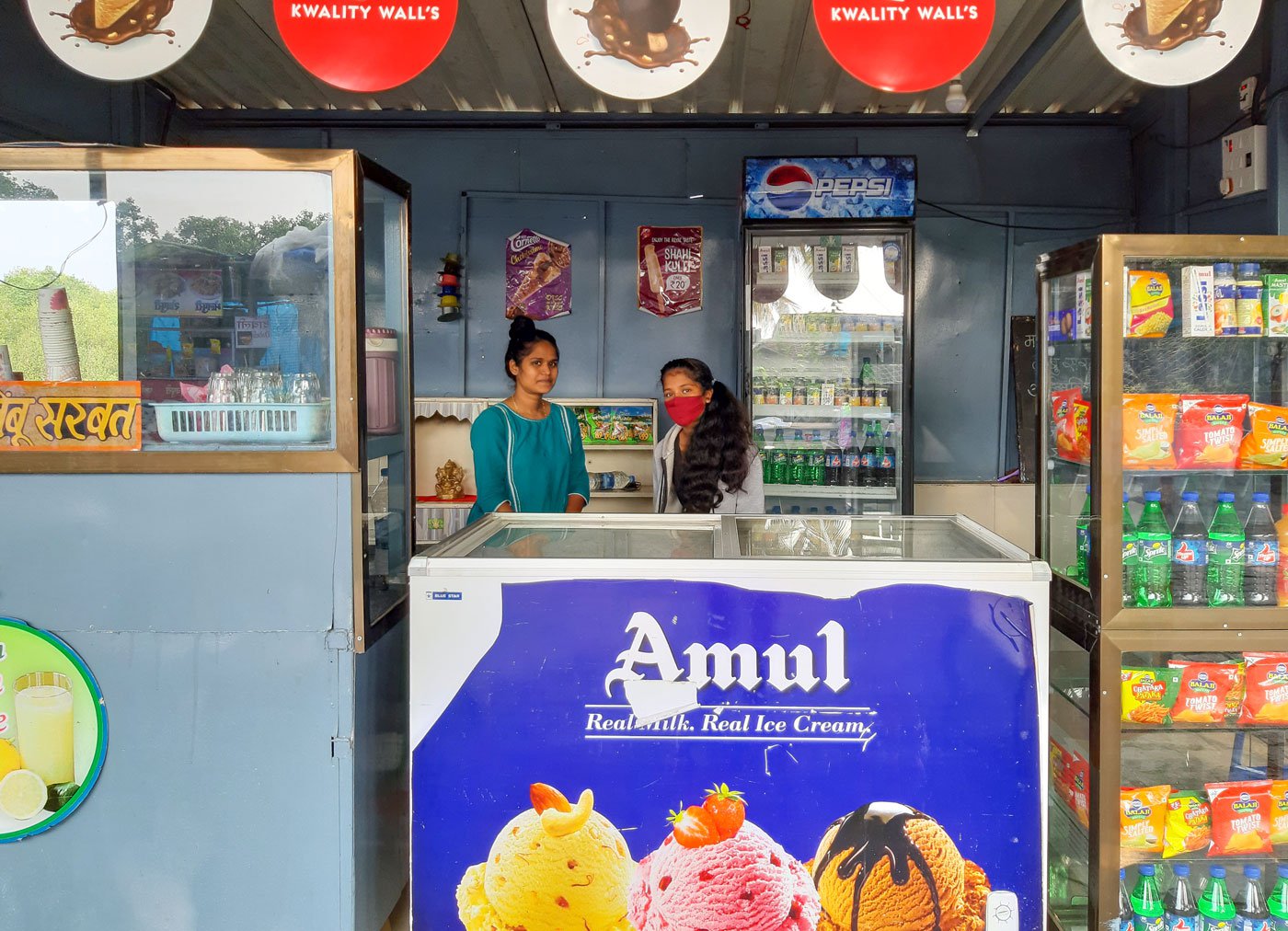
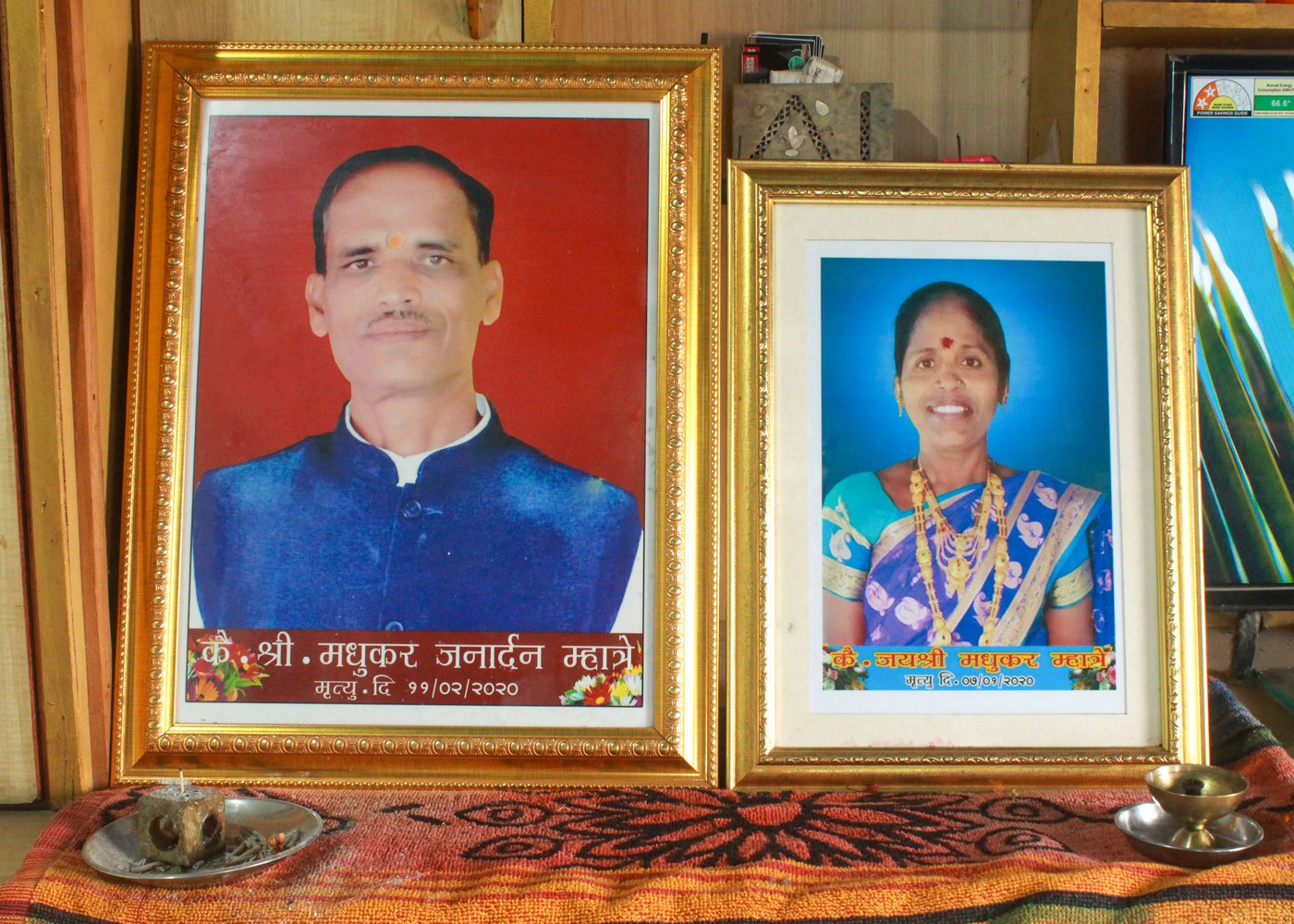
Left: Bhavika and Gauri Mhatre at their food shop near the Elephanta caves. They have been managing it ever since their parents died in early 2020. Right: Photos of their parents, Madhukar (left) and Jayashree
An hour after leaving home, the Patils ended up at the health centre in Gavhan village, Raigarh’s Panvel taluka , where a blood test revealed that her haemoglobin was low. Vatsala returned home, but her condition worsened the next day and she began vomiting. This time, she had to be rushed to the same hospital, and when she arrived a check revealed that her oxygen levels were falling; she tested positive for Covid-19. She was sent to the state-run hospital in Panvel city for treatment, where she passed away 10 days later. “The doctor said it was lung failure,” Daivat says.
A local health facility and easy access to medicines may have changed the outcome for both Vatsala and Jayashree.
A month after Jayashree’s death, Bhavika and Gauri were left orphaned when their father Madhukar passed away as well. The sisters say he died of heartbreak. Madhukar was on medication for diabetes, and early one morning, Bhavika found him vomiting blood outside the house. The family had to wait until later morning to get him across the water and admit him to a private hospital in Nerul – the journey via boat to Mora and then by road to Nerul takes more than an hour. He passed away 20 days later, on February 11, 2020.
The Mhatre family belongs to the Agri Koli community, listed as Other Backward Class in Maharashtra. The two sisters, Bhavika and Gauri, now run their parents’ stall in order to survive.
*****
Tourists alighting at Gharapuri’s jetty to visit the Elephanta caves will likely pass stalls selling tourist memorabilia and food. One such stall, with plates of sliced raw mango, cucumbers and chocolates, is manned by 40-year-old Shailesh Mhatre – who must abandon his post every time someone in his family of four needs medical attention. He then misses a day’s work and wages. It happened recently, in September 2021, when his mother, Hirabai Mhatre, 55, slipped on a wet rock and fractured her leg. She didn’t have access to any pain medication and suffered through the night. The next day she had to be carried by Shailesh to get the boat to Uran.
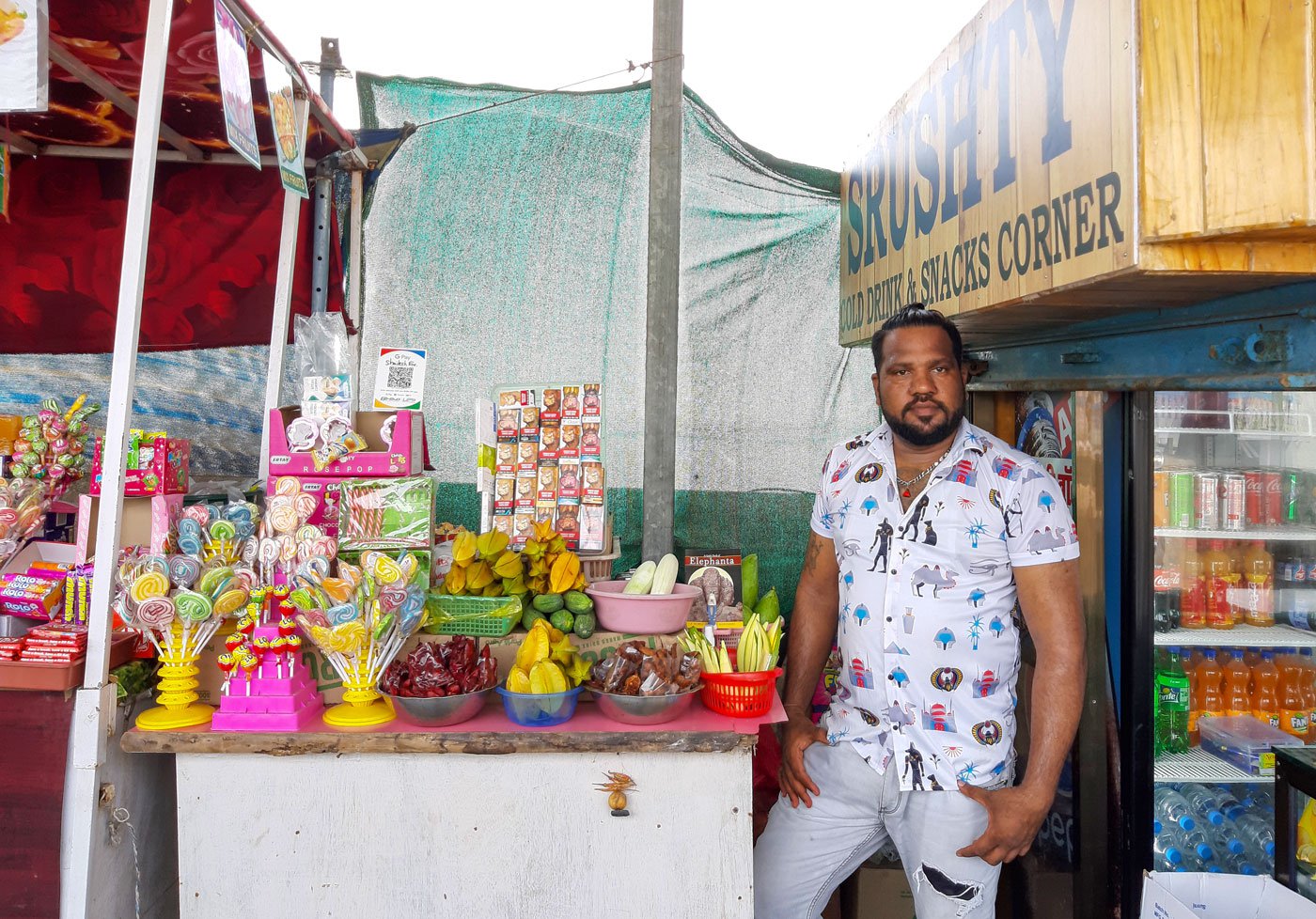
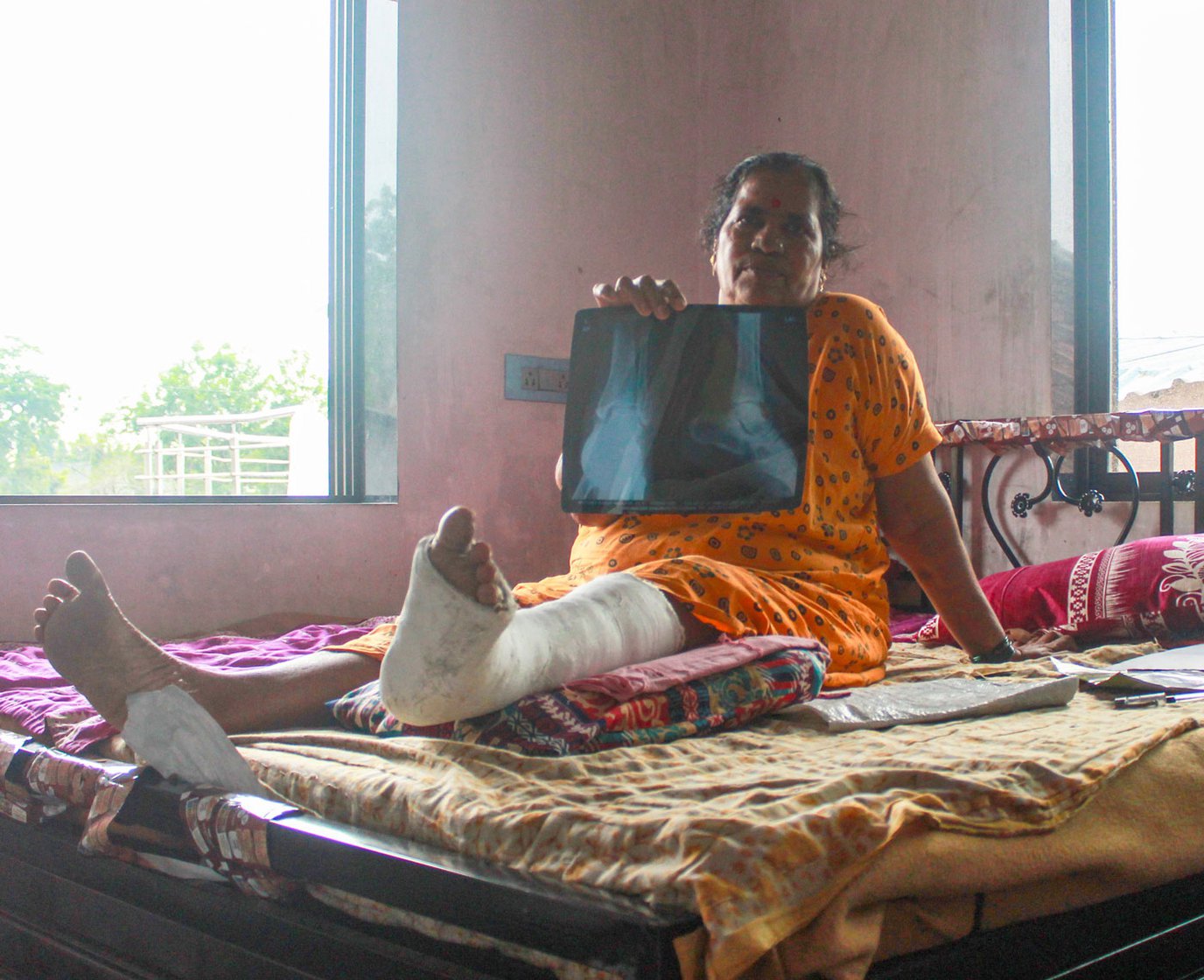
Left: Shailesh Mhatre at the fruit stall where he works, close to the jetty where tourists arrive to visit Elephanta caves. Right: Shailesh's mother, Hirabai Mhatre, had suffered in pain after slipping on a wet rock. She had to wait until the next day to cross the water for treatment and medicines
“The hospital [in Uran] asked for Rs. 70,000 to operate on my leg,” says Hirabai. “We didn’t have that much so went to Panvel [an hour away], where we were asked for the same amount. We finally landed at JJ Hospital [in Mumbai], where I was treated for free. I got this plaster there.” In spite of finally getting free treatment, and only medicines to pay for, the family ended up spending Rs. 10,000 on treatment, medicines and travel.
There is no bank on the island, not even an ATM, so Shailesh had to borrow money from relatives and friends. He is the only earning member of the family and his job as a helper at the stall doesn’t pay much. The family is already saddled with an earlier medical debt of Rs. 30,000 (for Covid-19 treatment).
With her leg in a plaster and unable to walk, Hirabai was worried. “I kept looking at this plaster and thinking of how I will have to travel all the way back to Mumbai to get this checked and removed,” she said, adding, “ Jungle samajh kar chod diya hai [We have been abandoned here, in this jungle].”
Her sentiment, widely held in the village, is shared by the sarpanch , Baliram Thakur, who had petitioned the Uran zilla parishad since 2017 to set up a medical facility here. “We finally got it built in 2020, in Shetbandar. But we are yet to find a doctor to stay,” he says. Maharashtra has among the lowest percentage of doctors in rural areas – a mere 8.6 per cent of the state’s medical practitioners work in villages. This is according to a 2018 report on India’s health workforce, jointly published by World Health Organisation and Public Health Foundation of India.
Baliram has also been asking for a health worker to be stationed, but says, “No one is ready to stay here. Not just us people in the village, but tourists need medical facilities as well. There was a tourist who fell while trekking and had to be rushed to Mumbai.”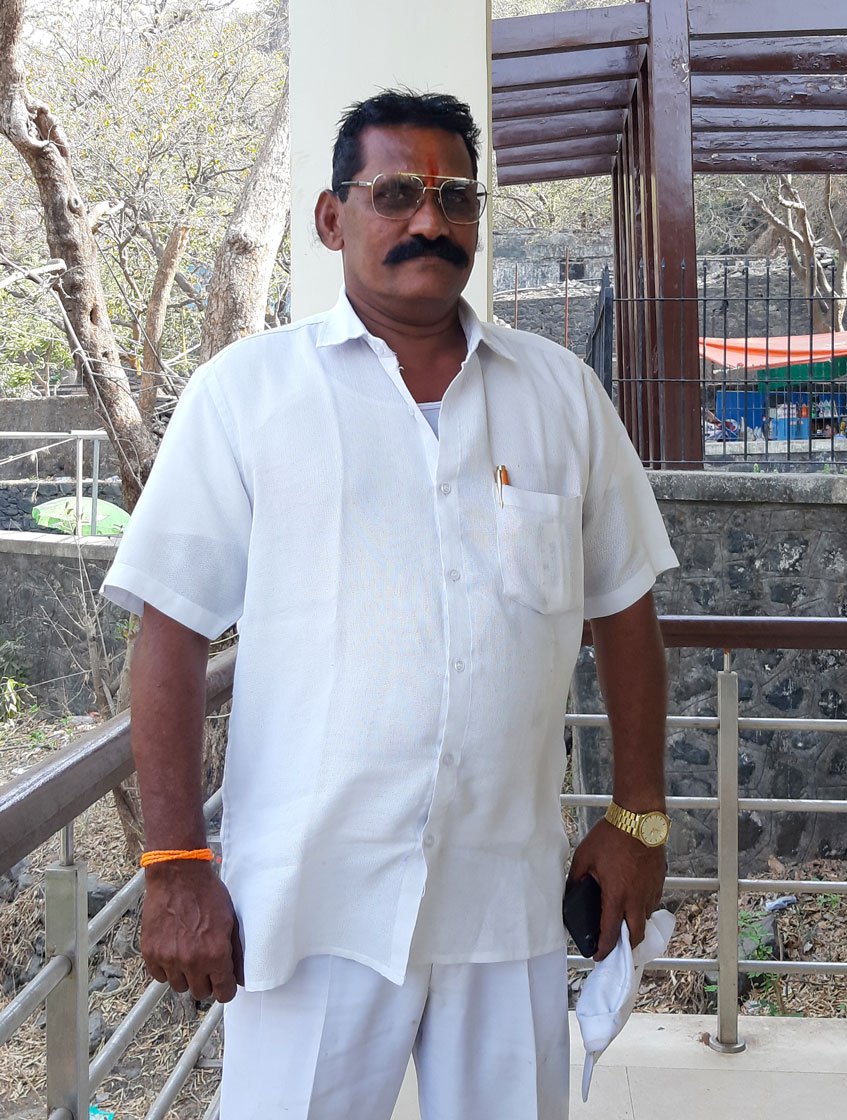
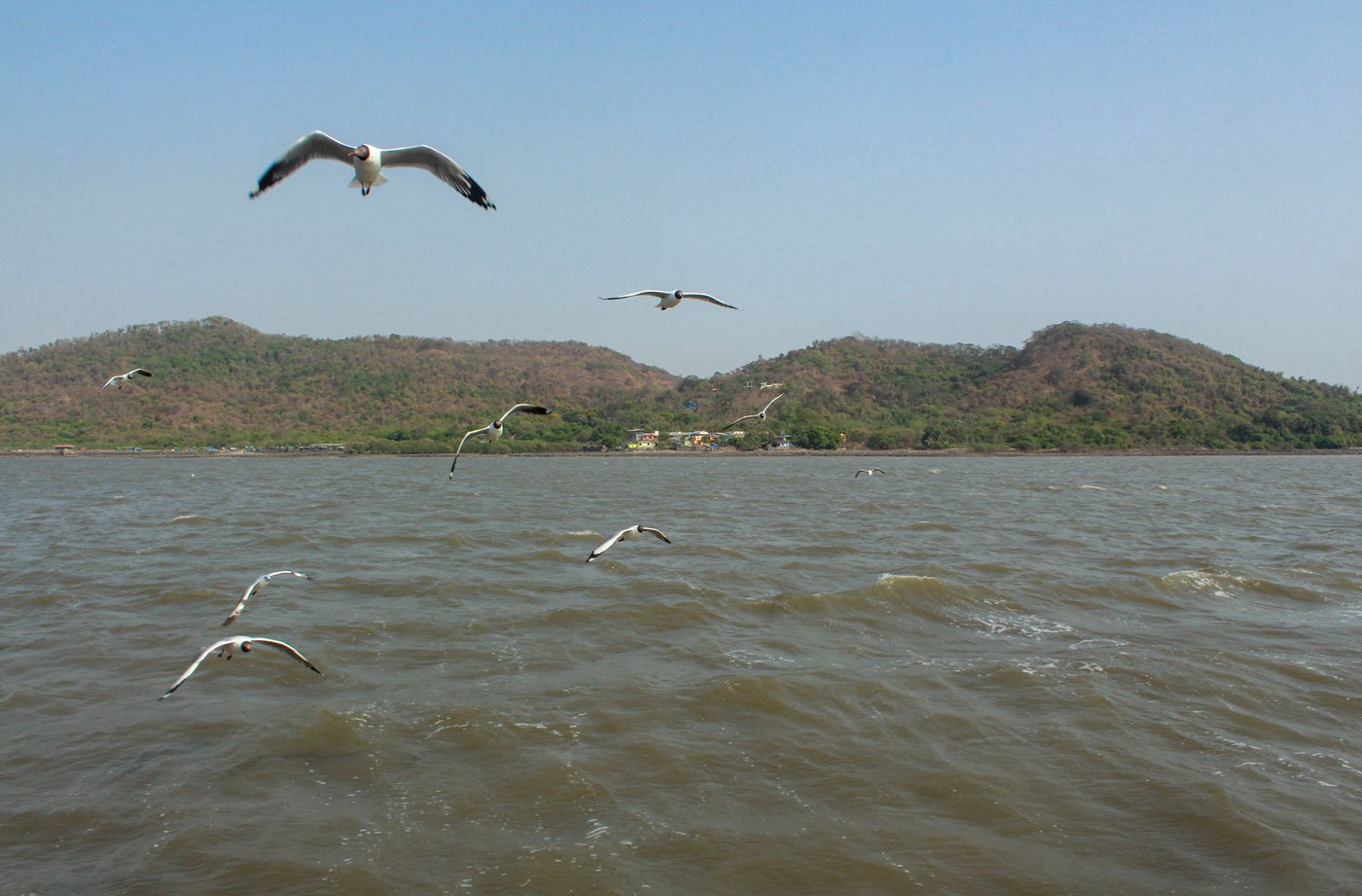
Left : Baliram Thakur, Gharapuri's sarpanch , who petitioned the Uran zilla parishad to set up a health sub-centre in the village. ‘But we are yet to find a doctor to stay ’. Right: For the island ’s residents, the only way to go anywhere is by boat
Gharapuri residents’ health rests in the hands of Dr. Rajaram Bhosle, who has been posted at the primary health centre (PHC) in Koproli village since 2015. He has 55 villages under his care, and travelling to Gharapuri from his PHC takes one and a half hours of travel (by road and boat). “We have nurses who go there twice a month, and if there is any emergency I am informed about it,” he said, adding that he was unaware of any medical emergencies during his tenure.
Nurses from Koproli PHC see patients at the anganwadi or gram panchayat office in Gharapuri. Sarika Thale, a nurse and arogya sevika , has been in charge of the village (and 15 other villages) since 2016. She visits twice a month to give polio drops and meets young mothers.
“During the monsoon it is difficult to reach here as boats don’t ply because of the high tides,” she points out. Living in Gharapuri is impractical for her, she says. “I have [young] children. Where will they study? And how will I travel from here to other villages for my work?”
In Gharapuri, other amenities like water and electricity have only recently become available. Until 2018, the island only had access to electricity fired from generators provided by Maharashtra Tourism Development Corporation (MTDC); they ran from 7 p.m. to 10 p.m. Water lines came in 2019. The only school on the island has shut down.
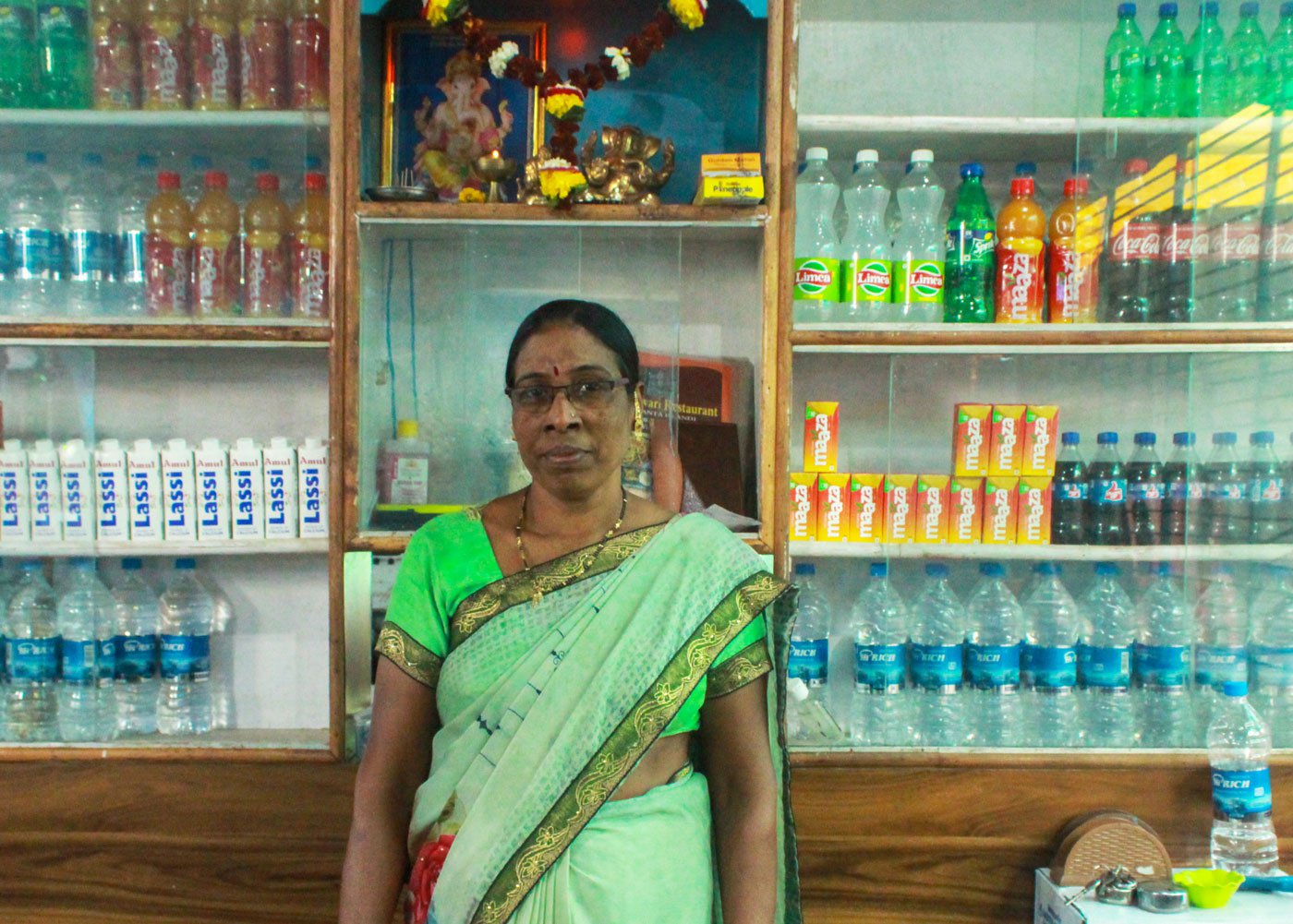
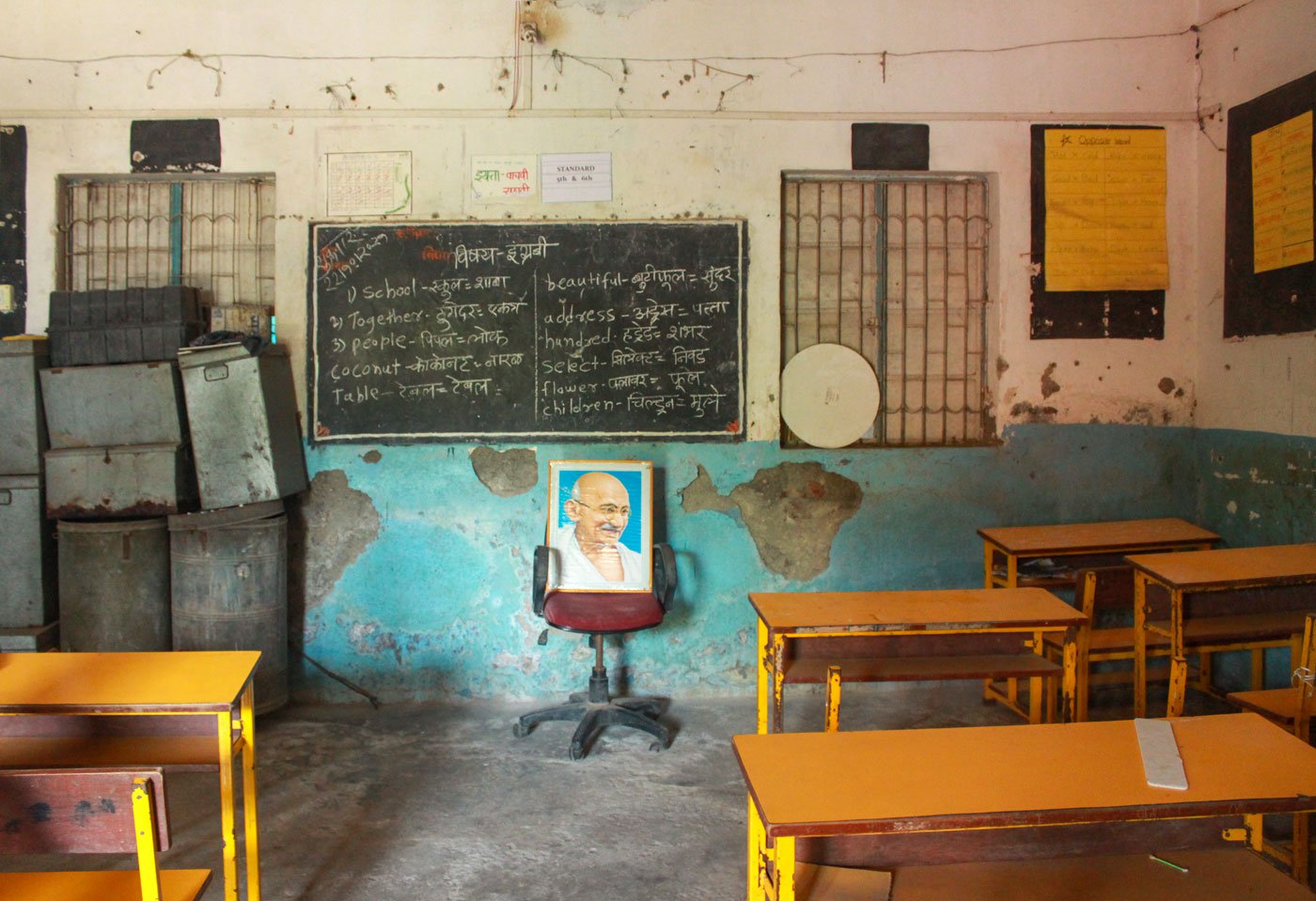
Left: Sandhya Bhoir remembers delivering her first child on a tossing boat, on the way from the island to a hospital in Mumbai. Right: The zilla parishad school in Gharapuri, which shut down in April 2022
Given the inadequacy of facilities, it’s not surprising that pregnant women leave the village a few months before their due date as they don’t want to take any chances. Many leave the island in the the last few months of their pregnancy, and move in with a relative or rent a room on the mainland, both options calling for additional expenses. Even those who stay behind say it’s a hunt for medical supplies and also fresh vegetables and pulses, which pregnant women need.
During the lockdowns in 2020, expectant mothers could not access hospitals as boats were not plying. Kranti Gharat, 26, was three months pregnant when the lockdown was announced in March that year, and all transportation was stopped. She couldn’t have regular check-ups and said that sometimes the pregnancy-related discomfort was unbearable. “I had to speak to a doctor on the phone to explain my condition,” she said, voicing her frustration at the situation.
Sandhya Bhoir remembers delivering her first child on a boat while en route to a hospital in Mumbai. It was 30 years ago, and the local dai (traditional midwife) was struggling to deliver the baby. “I had left everything to God,” she says, laughing at the memory of giving birth on a tossing boat. A decade ago there were two dais in the village, but over time, the preference for institutional births and monetary incentives given by the state, have led to a sharp fall in demand for their services.
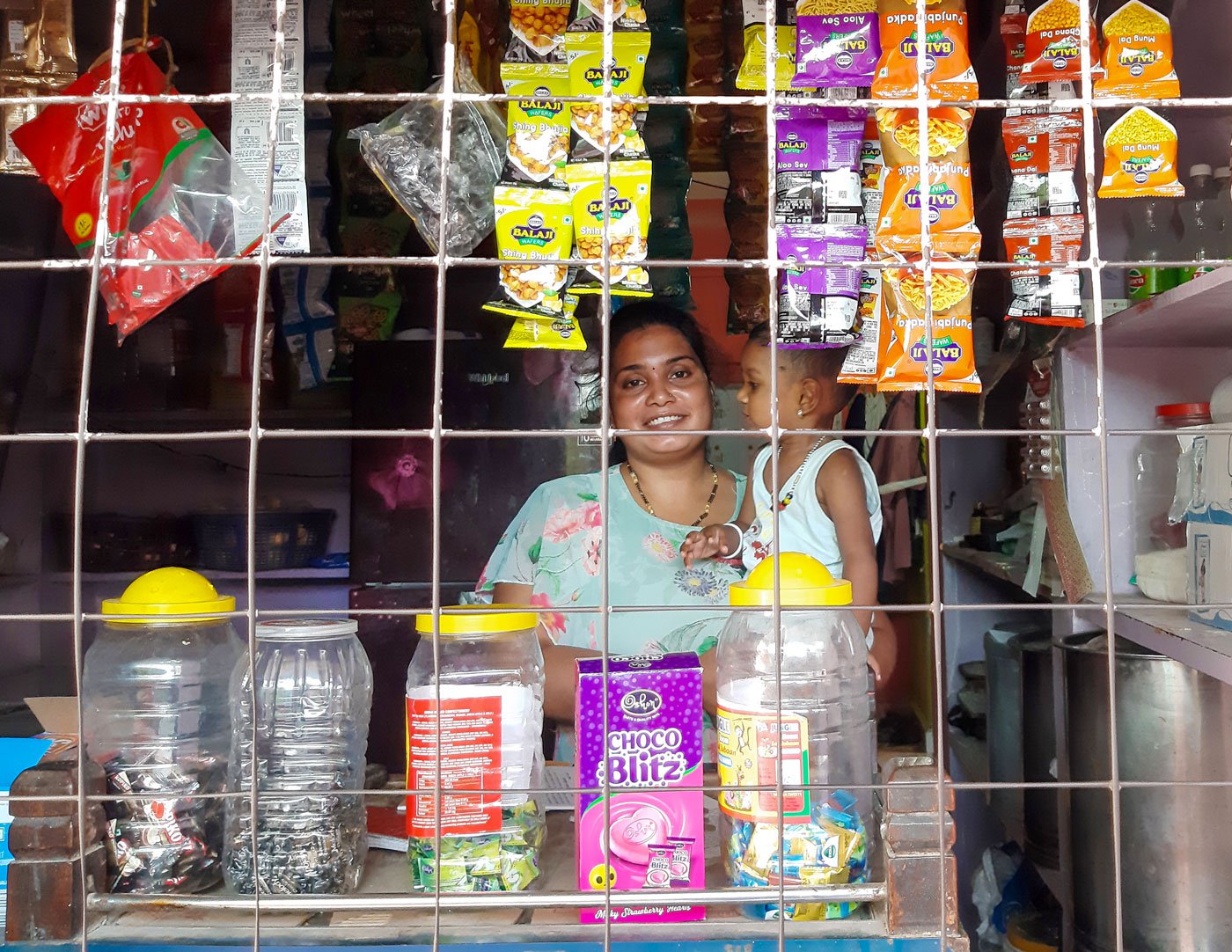
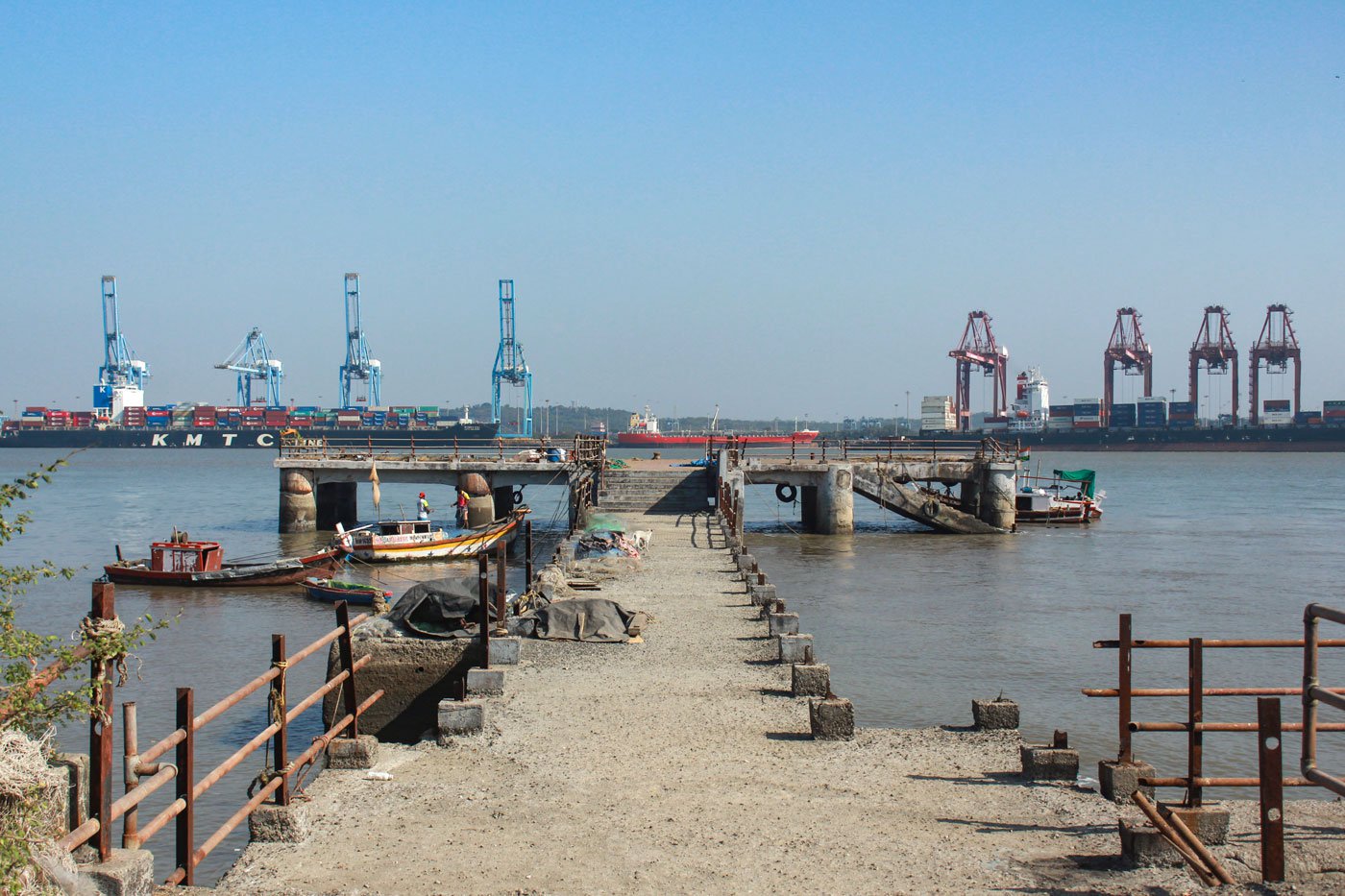
Left: Kranti Gharat with her child, Hiyansh, in the small shop she runs with her husband. Right: A view of the jetty from where the villagers catch a boat to go to mainland
Not having a medical store in the village has forced residents to plan ahead. “I would hoard supplies of medicines for a month, even if they had been prescribed for only a few days, since we never knew when we would be able to return to the hospital to stock up,” she said. Kranti and her husband, Suraj, belong to the Agri Koli community and run a small kirana store in Gharapuri. Before the Covid-19 lockdowns, their earnings were around Rs. 12,000.
In her sixth month of pregnancy, Kranti shifted to her brother’s house in Navin Sheva village in Uran taluka . “I didn’t go earlier as I was worried about the bimari [Covid-19]. I felt it was safer in Gharapuri, and I also didn’t want to be a burden on bhai [my brother] , ” she said.
When she did travel, she spent Rs. 300 on the boat ride, which was 10 times the usual cost of Rs. 30 for the journey. Worried that a public hospital would be risky due to Covid-19 cases, her family opted for a private hospital and spent roughly Rs. 80,000 on caesarean surgery and medicines. “It went on doctor’s fees, tests and medicines,” says Kranti. She and Suraj had used up their savings then.
Kranti is eligible for the Pradhan Mantri Matru Vandana Yojana (PMMVY), a maternity benefit scheme of the union government to improve health of pregnant women and lactating mothers. She should receive Rs. 5,000, but despite applying for it in 2020, Kranti is yet to receive the amount, proving that the official apathy towards Gharapuri’s residents is not limited to any one aspect of health care.
